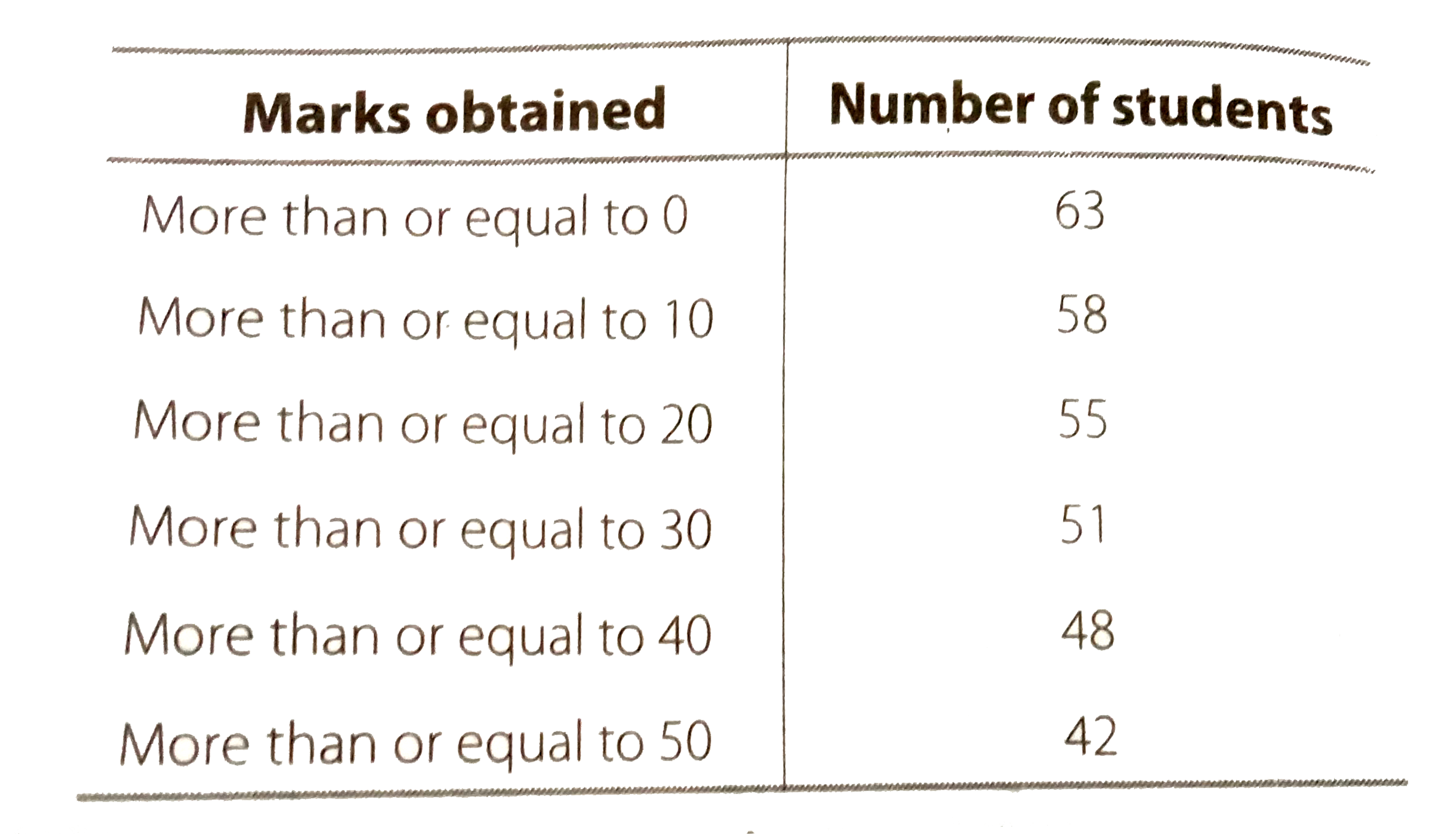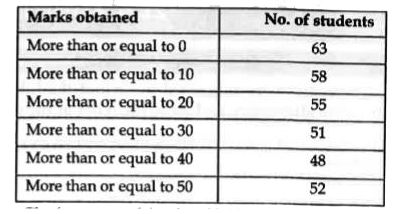Following data gives the number of children in 40 families:2,1,5,6,1,5,1,3,2,6,4,2,0,4,4,3,2,2,0,0,1,2,2,4,3,2,0,5,1,2,4,3,4,1,2,2,6
Represent it in the form of frequency distribution, taking classes 0-2,2-4 etc.Solution in Punjabi
Step by step video & image solution for Following data gives the number of children in 40 families:<r>2,1,5,6,1,5,1,3,2,6,4,2,0,4,4,3,2,2,0,0,1,2,2,4,3,2,0,5,1,2,4,3,4,1,2,2,6Represent it in the form of frequency distribution, taking classes 0-2,2-4 etc. by Maths experts to help you in doubts & scoring excellent marks in Class 9 exams.
Updated on:21/07/2023Topper's Solved these Questions
Similar Questions
Define
Statistics as a subject.
View SolutionThree angles of a quadrilteral are respectively 50∘ and 110∘ and 100∘ . Find the fourth angles.
View SolutionFind the lateral surface and total surface area of a cuboid of length 80 cm, breadth 40 cm and height 20 cm.
View SolutionForm a grouped frequency distribution from the following data by inclusive method taking 4 as the magnitude of class intervals. 31,23,19,29,22,20,16,10,13,34 38,33,28,21,15,18,36,24,18,15 12,30,27,23,20,17,14,32,26,25 18,29,24,19,16,11,22,15,17,10
inclusive class intervals. - Lower and upper both limits are included for data
Class Frequency 9−125(10,10,10,11,12)
13−16 6(13 14 1515 15 16) 17 - 20 9 ( 17 17 18 18 18 19 19 20 20 ) 21 - 24 6 ( 21 22 22 23 24 24) 25 - 28 5 ( 25 25 26 27 28 ) 29 - 32 5 ( 29 29 30 31 32 ) 33 - 36 3 ( 33 34 36 ) 37 - 40 1 ( 38 ) Total 40
View SolutionFollowing data gives the number of children in 40 families: 1,2,6,5,1,5,1,3,2,6,2,3,4,2,0,0,4,4,3,2 2,0,0,1,2,2,4,3,2,1,0,5,1,2,4,3,4,1,6,2 Represent it in the form of a frequency distribution.
View SolutionFollowing data gives the number of children in 40 families: 1,2,6,5,1,5,1,3,2,6,2,3,4,2,0,0,4,4,3,2,2,0,0,1,2,2,4,3,2,1,0,5, 1,2,4,3,4,1,6,2,2 Represent it in the form of a frequency distribution.
View SolutionConsider the following distribution

Frequency of the class 30-40 is
View SolutionGiven below is the data showing the number of children in a family, in a locality of 15 families.
1,3,5,4,3,2,1,1,3,2,2,1,4,2 and 1. and Draw the frequency table to represent the data.
View SolutionThe number of children in 25 families of a colony are given below:
2,0,2,4,2,1,3,3,1,0,2,3,4,3,1,1,1,2,2,3,2,4,1,2,2.
Represent the above data in the form of a frequency distribution table.
View SolutionConsider the following distribution.

The frequency of the class 30-40 is
View SolutionForm a grouped frequency distribution from the following data by inclusive method taking 4 as the magnitude of class intervals. 31,23,19,29,22,20,16,10,13,34 38,33,28,21,15,18,36,24,18,15 12,30,27,23,20,17,14,32,26,25 18,29,24,19,16,11,22,15,17,10
View SolutionFollowing data gives the number of children in 40 families: 1,2,6,5,1,5,1,3,2,6,2,3,4,2,0,4,4,3,2,2,0,0,1,2,2,4,3,2,1,0,5,1,2,4,3,4,1,6,2,2. Represent it in the form of a frequency distribution, taking classes 0−2, 2−4, etc.
View SolutionFollowing data gives the number of children in 40 families: 1,2,6,5,1,5,1,3,2,6,2,3,4,2,0,0,4,4,3,2 2,0,0,1,2,2,4,3,2,1,0,5,1,2,4,3,4,1,6,2 Represent it in the form of a frequency distribution.
View SolutionFollowing data gives the number of children in 40 families: 1,2,6,5,1,5,1,3,2,6,2,3,4,2,0,0,4,4,3,2,2,0,0,1,2,2,4,3,2,1,0,5, 1,2,4,3,4,1,6,2,2 Represent it in the form of a frequency distribution.
View SolutionForm a grouped frequency distribution from the following data by inclusive method taking 4as the magnitude of class intervals. 31,23,19,29,22,20,16,10,13,34,38,33,28,21,15,18,36,24,18,15, 12,30,27,23,20,17,14,32,16,25,18,29,24,19,16,11,22,15,17,10
View SolutionOut of 10000 families with 4 children each, find the frequencies of distribution of number of male children.
View Solution
